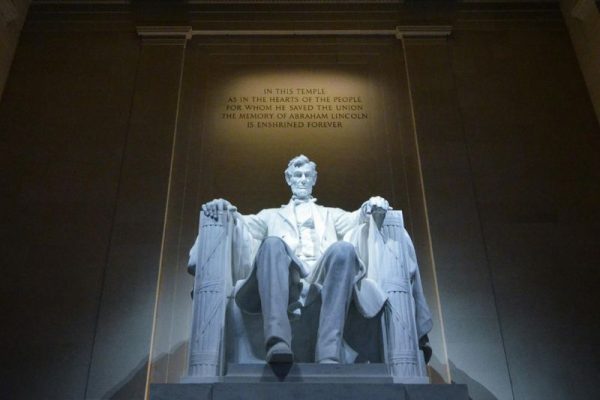The History of Cannabis/Marijuana Laws in the United States
The legal history of cannabis in the United States is marked by a complex evolution from encouragement of its cultivation to stringent prohibition, followed by a gradual decriminalization and legalization at the state level over the last few decades. Here’s how this journey unfolded:
Colonial and Early American Era

Cannabis, or hemp, was introduced to North America by early settlers. In 1619, King James I decreed that American colonists in Jamestown cultivate hemp to support England’s needs, particularly for rope and sails. This mandate was significant enough that George Washington himself grew hemp at Mount Vernon. This period saw cannabis primarily used for industrial purposes, although its medicinal uses were recognized, with cannabis preparations available in pharmacies by the mid-19th century following its introduction to Western medicine by William O’Shaughnessy in 1839.
The Turn of the Century and Prohibition
The early 20th century marked a shift in attitudes towards cannabis. As Mexican immigrants, who used marijuana recreationally, settled in the U.S., especially around the time of the Mexican Revolution in 1910, public and legislative sentiment began to sour. Media reports and law enforcement often linked marijuana use to crime and violence, despite lacking substantial evidence. This xenophobic narrative fueled the passage of state-level prohibitions starting in the early 1910s, with many states classifying cannabis as a poison subject to regulation.
By the 1930s, the federal government stepped in with the Marihuana Tax Act of 1937, which didn’t directly criminalize cannabis but made its sale and possession extremely restrictive through an onerous tax system. This act was pushed by Harry J. Anslinger, the first commissioner of the Federal Bureau of Narcotics, who used sensationalist and often racially charged rhetoric to demonize marijuana, famously stating that it led to crimes among minority groups and entertainers. This era also saw the infamous “Reefer Madness,” a film that exaggerated the dangers of marijuana, further influencing public opinion against it.
Post-World War II and the Controlled Substances Act
The post-war period brought further restrictions. The Boggs Act of 1951 and the Narcotics Control Act of 1956 increased penalties for marijuana possession. However, by the late 1960s and into the 1970s, cultural shifts began to influence policy. The Shafer Commission, appointed by President Nixon, suggested decriminalization in 1972, but Nixon rejected this recommendation, favoring a tougher stance on drug use.
The Controlled Substances Act (CSA) of 1970 placed cannabis in Schedule I, alongside drugs like heroin, asserting it had no accepted medical use and a high potential for abuse. This classification has remained a cornerstone of federal marijuana policy to this day, despite numerous efforts to reschedule it.
Decriminalization and State-Level Legalization
The 1970s saw several states, beginning with Oregon in 1973, reduce penalties for marijuana possession, effectively decriminalizing small amounts. This trend continued but was met with resistance in the form of the “War on Drugs” in the 1980s, escalating penalties once more under Reagan’s administration.

However, the late 20th and early 21st centuries marked a significant pivot. In 1996, California passed Proposition 215, legalizing medical marijuana, setting a precedent for other states to follow. By 2016, a majority of states had adopted some form of medical marijuana law.
Recreational legalization began in earnest with Colorado and Washington in 2012, passing laws allowing adults to use cannabis for non-medical purposes. This was followed by a wave of other states legalizing recreational use, each with its regulatory framework, leading to a patchwork of state laws that conflict with federal prohibition.
Modern Challenges and Federal Stance
The tension between state and federal law has created numerous legal and practical challenges. The Rohrabacher-Farr amendment since 2014 has prohibited federal interference with state medical marijuana laws, providing some legal cover. However, the Cole Memorandum of 2013, which instructed federal prosecutors to focus on specific violations rather than state-legal cannabis operations, was rescinded in 2018 by Attorney General Jeff Sessions, signaling a potential for stricter federal enforcement, although this has not broadly materialized.
The 2018 Farm Bill further complicated matters by legalizing hemp with less than 0.3% THC, distinguishing it from “marijuana” under federal law, allowing for its cultivation and sale without the same restrictions.
Current Landscape and Future Directions
As of early 2025, the legal landscape remains dualistic, with states like California, Colorado, and others having robust recreational and medical markets, while federal law still officially categorizes marijuana as illegal. Efforts to change federal policy, including bills to legalize or decriminalize cannabis at the national level, have been proposed but not yet enacted.
Public opinion has shifted dramatically, with a significant majority now supporting legalization in some form, influenced by changing perceptions of cannabis’s risks and benefits, the social justice implications of past drug policies, and the economic potential of legal markets.
The history of cannabis laws in the U.S. reflects societal, cultural, and political changes, illustrating how deeply intertwined drug policy is with broader issues of race, class, health, and economics. The ongoing dialogue between federal and state policies continues to shape the future of cannabis in America, with each new legislative session potentially bringing more clarity or further complicating this intricate legal tapestry.
For a more in depth look into the history of Cannabis, check out this interesting Documentary on YouTube. And be sure to check out our Grow Room Quick Start Guide.
*References used in this article:*
(https://en.m.wikipedia.org/wiki/Legal_history_of_cannabis_in_the_United_States)
(https://en.wikipedia.org/wiki/Timeline_of_cannabis_laws_in_the_United_States)
(https://en.m.wikipedia.org/wiki/Timeline_of_cannabis_laws_in_the_United_States)
(https://www.history.com/news/why-the-u-s-made-marijuana-illegal)
(https://en.wikipedia.org/wiki/Legal_history_of_cannabis_in_the_United_States)
(https://libguides.law.uga.edu/c.php?g=522835&p=3575350)
(https://www.thestreet.com/markets/history-of-marijuana-14718715)
(https://alcoholpolicy.niaaa.nih.gov/about/about-cannabis-policy)
(https://time.com/4298038/marijuana-history-in-america/)
(https://en.wikipedia.org/wiki/Cannabis_in_the_United_States)


